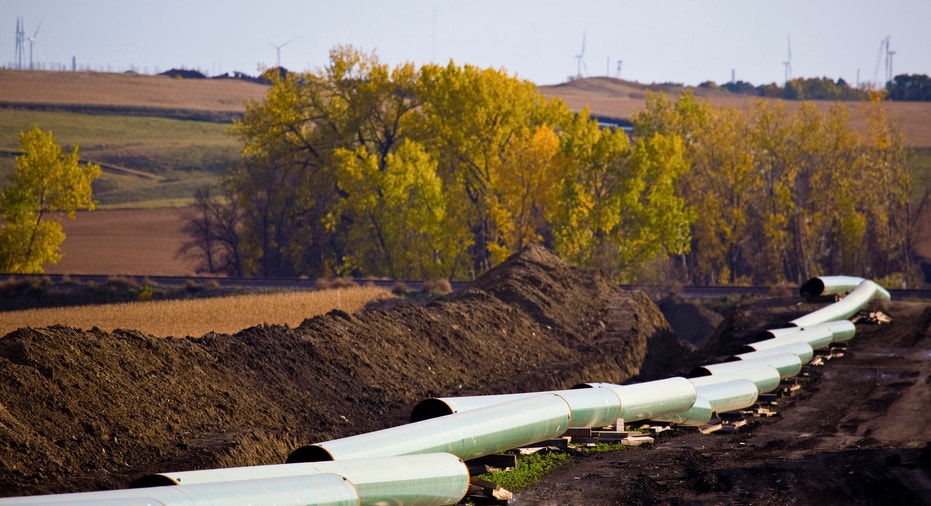IHS: Rejecting Keystone Will Have Little to No Impact on Greenhouse Gas Emissions

A new study from IHS, a prominent, independent energy research firm, says that a thumbs down from President Barack Obama on the Keystone Pipeline would have minimal to no impact on U.S. greenhouse gas (GHG) emissions.
It found that “Venezuelan heavy oil—and Venezuela—would be the number one beneficiary of a negative decision on Keystone.”
The new findings may figure prominently in the fight over the pipeline, which the administration is expected to render a decision on in September.
The emissions would still be the same without the pipeline due to the fact that TransCanada would still deliver the oil to market via alternate pipelines and by rail, IHS says.
Moreover, the absence of oil sands in U.S. Gulf Coast refineries from Keystone XL “would most likely be replaced by imports of heavy crude oil from Venezuela, which has the same carbon footprint as oil sands,” according to IHS. Obama's June 25 climate address indicated that emissions from Canadian oil sands delivered through U.S. markets was a key criteria for his decision whether to approve the project.
IHS notes that its new finding “agrees with the conclusions of the U.S. State Department's Draft Supplemental Environmental Impact Statement for Keystone XL that says oil sands production is expected to continue at similar levels regardless of whether Keystone XL goes forward.”
If oil sands were not shipped to the U.S. Gulf Coast, “it would result in little to no change in overall GHG (greenhouse gas) emissions,” because Venezuela’s heavy crude would still be refined there, the study says. “The region—which contains 50% of total U.S. refining—has a large capacity to process heavy crude. This means that crude oils of similar GHG intensity would continue to be refined in the absence of oil sands.”
Venezuela is currently the largest single supplier of heavy crude to the U.S. Gulf Coast and would be the most likely alternative source of heavy crude supply absent oil sands. IHS research has found Venezuelan heavy crude to have a similar range of life-cycle GHG emissions as oil sands imported into the United States.
IHS currently forecasts oil sands production will grow from 1.9 million barrels per day (mbd) in 2013 to 4.3 mbd in 2030. It "does not expect the Keystone XL decision to have a material impact on the production outlook.”
The IHS study also points out that 3 mbd of additional oil sands pipeline capacity (not including Keystone XL) is currently being built. “Some 80% of this proposed alternate capacity travels exclusively through Canada—connecting the oil sands with Canada's west and east coasts—and thus would not require U.S. government approval,” it says.
Meanwhile, the Department of Energy’s (DOE) information arm says job growth in the oil and natural gas sector outpaced overall private sector job growth by a dramatic 40% from 2007 to 2011, thanks to development in states like North Dakota’s Bakken Shale formation.
The Energy Information Administration (EIA), a wing of DOE, says that "from 2007 through 2012, total U.S. private sector employment increased by more than one million jobs, about 1%.”
But the EIA says over the same period, oil and natural gas jobs “increased by more than 162,000 jobs, a 40% increase.” The jobs range from drilling, extraction, and support services including exploration, excavation and well surveying. The job count does not include the multiplier effect of private sector jobs in the area of oil and natural gas development, including things like new retail shops or restaurants (for more, click here).
The EIA also notes that, because these oil and natural gas jobs typically pay more than the average salary, those jobs add a lot to U.S. GDP. “Because employee expenditures are closely tied to their incomes, higher paying jobs, such as those in the oil and gas sector, tend to have larger indirect effects on output and employment than lower paying ones,” it says.
The EIA notes this finding is clearly at play in North Dakota, “which has seen significant gains in real gross domestic product per capita, coinciding with the development of the Bakken shale play."



















